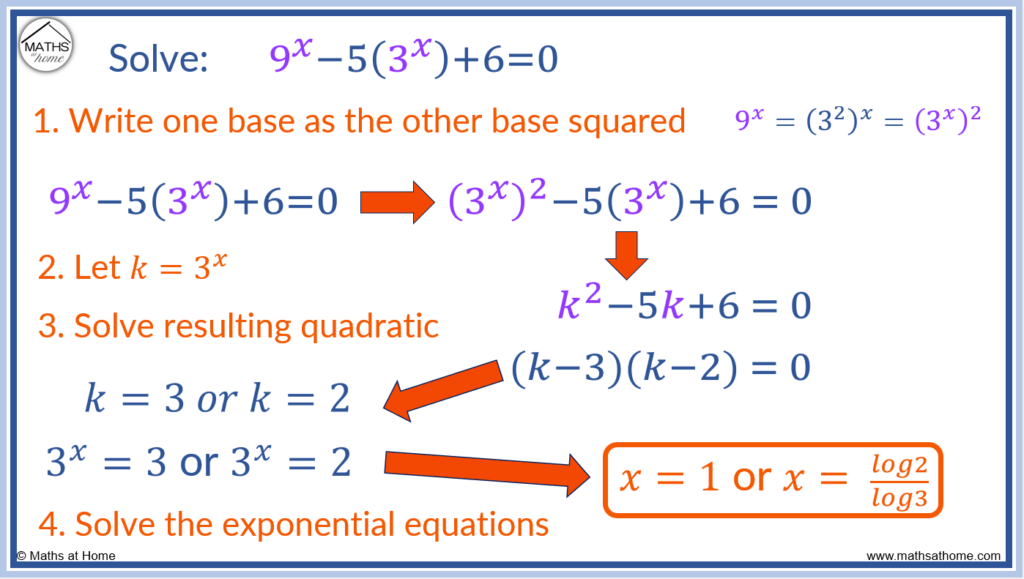Welcome to a Challenging Exponential Equation Tutorial
Today, we’ll tackle a perplexing exponential equation that cannot be easily solved through trial and error or basic exponent rules. Brace yourself for one of the most intriguing exponential challenges: solving for X when X to the power of 5 equals 9 to the power of X.
Introducing the Lambert W Function
To conquer this formidable challenge, we’ll employ a powerful tool known as the Lambert W function. This mathematical function is the key to solving equations like the one before us. But before we dive into today’s challenge, if you’re new to this channel, please consider subscribing. Don’t forget to enable the notification bell, so you’re alerted when we release our next exciting video.
The Solution Process
Now, let’s dive into solving this equation: X^5 = 9^X. Our first step is to take the natural logarithm (ln) of both sides of the equation, which yields ln(X^5) = ln(9^X). Applying the logarithmic rule that allows us to move exponents as coefficients, we get 5 * ln(X) = X * ln(9).
Next, we’ll divide both sides by 5X to isolate ln(X) on the left-hand side: (1/5) * ln(X) = (1/X) * ln(9).
Now, we need to eliminate the division by moving ln(X) to the right-hand side. To do this, we’ll use the property that e^(ln(X)) equals X, where e is the base of natural logarithms. Therefore, we can rewrite (1/5) * ln(X) as ln(X^(1/5)), and (1/X) * ln(9) as ln(9^(1/X)).
Now, our equation becomes ln(X^(1/5)) = ln(9^(1/X)).
To proceed, we’ll apply the Lambert W function to both sides. This function, often called the product log, states that if we have a * e^a, then its Lambert W function is a. Applying this rule, we get:
Lambert W(ln(X^(1/5))) = Lambert W(ln(9^(1/X))).
Solving for X
Now, we have Lambert W(ln(X^(1/5))) = Lambert W(ln(9^(1/X))). To isolate X, we’ll continue simplifying. First, we’ll introduce a minus sign to both sides to account for the difference in signs:
-Lambert W(ln(X^(1/5))) = -Lambert W(ln(9^(1/X))).
Now, we can rewrite this as:
Lambert W(-ln(X^(1/5))) = Lambert W(-ln(9^(1/X))).
By applying the property of Lambert W, we have:
-ln(X^(1/5)) = -ln(9^(1/X)).
Taking the negative signs out and simplifying:
ln(X^(1/5)) = ln(9^(1/X)).
Now, we’ll remove the natural logarithms by exponentiating both sides:
X^(1/5) = 9^(1/X).
To solve for X, we’ll raise both sides to the fifth power:
(X^(1/5))^5 = (9^(1/X))^5.
Simplifying:
X = 9^(5/X).
The Final Answer
At this point, we have successfully transformed the equation into a solvable form: X = 9^(5/X). To find the exact values of X, you may need to use numerical methods or calculators. However, the solution is now in a manageable form.
Conclusion
And there you have it – the solution to the challenging exponential equation X^5 = 9^X. By applying the Lambert W function and some mathematical transformations, we’ve arrived at X = 9^(5/X).
If you found this tutorial helpful, please give the video a thumbs up. If you have alternative methods for solving this equation, don’t hesitate to share them in the comments section. We value your insights and contributions.
Thank you for joining us today, and remember that we’re here to provide you with the best in math education. Your support has been our driving force.
